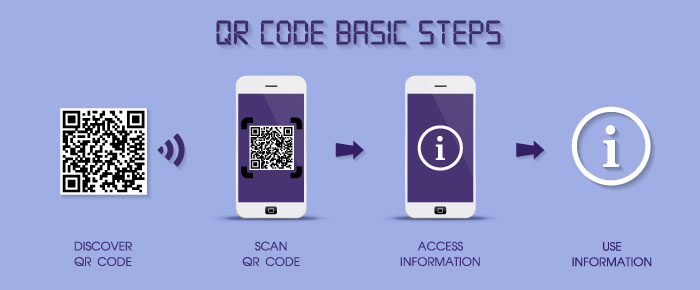 The advancements in technology have affected every industry, including the identification industry, which has led to the development of “smart” labels and tags. Smart labels use technology to provide additional functionality to retail, logistics, and research. Let’s discover what smart labels are and how they work.
The advancements in technology have affected every industry, including the identification industry, which has led to the development of “smart” labels and tags. Smart labels use technology to provide additional functionality to retail, logistics, and research. Let’s discover what smart labels are and how they work.
What Are Smart Labels?
The description of smart labels can vary between fields and industries, with several definitions available. Simply put, smart labels are labels that incorporate technology to extend their functionality beyond traditional print methods. These labels should also respond to a given trigger, such as UV radiation, temperature, or an electronic consumer device.
Radio Frequency Identification (RFID)
RFID labels are likely the best example of smart labels currently available. These labels consist of a tag with an integrated ID chip coupled to an antenna and work along with an RFID scanner and a data processing system. Primarily using passive ID chips for their smaller size and greater flexibility, they are powered through electromagnetic induction created by radio frequency signals from the RFID reader. The received signal is modulated and reflected back, with each signal being unique for each chip. There are also newer forms of RFID labels that utilize LED lights and respond to flashing light instead of radio waves.
There are several benefits that RFID labels provide beyond traditional barcode labels. As they work with radio waves, they do not require direct line-of-sight to be scanned. This means that items do not have to be removed from their containers to be scanned and also allows multiple products to be scanned simultaneously, saving time. This can be a real benefit for research facilities with valuable samples in low-temperature storage, where removal from freezers could cause the sample to thaw and degrade. Furthermore, stationary wide-range RFID scanners can be used to provide an accurate real-time report of inventory, eliminating the need to manually inventory stock. Also, RFID tags can be encrypted, serving to protect sensitive information better.
Quick Response (QR) Barcodes
QR codes are 2D barcodes that allow for more information to be encoded than traditional 1D barcodes while also taking up less space, as they organize information both vertically and horizontally. Some of the advantages of this type of barcode are their high fault tolerance, preventing small scratches from affecting the integrity of the code, their size flexibility, able to be tailored to the labeling surfaces, and their ability to encode alphanumeric text, binary code, and even kanji. In addition, these QR codes can be scanned in any orientation by applications downloadable to any mobile phone, making scanning easy and convenient.
What allows them to confer the “smart” designation to labels is that they can be scanned by mobile devices, and be linked to content on a web page, or even prompt a download. This makes labels with QR codes perfect for product tracking and identification in logistics or providing marketing material to retail customers. QR smart labels are simple to implement, ideal for thermal printing, and compatible with barcoding software.
Data Embedded Barcodes
A data embedded barcode is a 1D barcode that has been extended or stacked to store more information. These barcodes are currently widely used by the food industry to record dates, product weight, and price for more accurate expiration date management, improved stock control, and less food waste. In addition to storing more data, it can also be used to trigger specific automated procedures.
The main drawback of embedded barcodes is the need to properly line-up the scanner with the barcode to read it. This also means that a high-quality printout is necessary, and even small amounts of damage can render the barcode unreadable. However, these barcodes offer several benefits, especially for supply chain management. Their ability to hold more information is also useful at point-of-sale by reducing stock rotation, improving inventory management, and managing promotions and discounts.
Time Temperature Indicators (TTI)
There are also some new and creative uses for smart labels that include TTI. Able to be applied during manufacturing, these smart labels will indicate if a product has been kept within the recommended storage temperature conditions. Used primarily by the food industry to ensure produce and other consumable products are held within a sustainable cold chain. This is achieved by an irreversible change of color that results from the cumulative effects of time and temperature, providing the accumulated time-temperature history of a product. As such, they can provide a quick visual assessment of the integrity of the product and reveal if it has been removed from cold storage or subjected to sub-standard refrigeration conditions.
TTI can be classified into several different groups, depending on the technology used, including physical, chemical, and biological. Offering several benefits, they can also be printed with barcodes, allowing them to be scanned/read digitally. The food industry commonly uses TTI as a way to visually indicate the shelf life of food, pharmaceutical companies to indicate the expiration date of drugs, and on medical products both in the clinic and the lab.
How Are Smart Labels Printed?
Smart labels are most commonly printed using thermal-transfer printers, given their use of pressure-sensitive substrates. However, inkjet and flexographic printers are also used by some companies. LabTAG provides assorted thermal-printers that can print these types of smart labels, including RFID printers, designed explicitly for that purpose. We also offer comprehensive printing services, along with barcode grading services, if you would rather receive your labels pre-printed and ready to use.
LabTAG by GA International is a leading manufacturer of high-performance specialty labels and a supplier of identification solutions used in research and medical labs as well as healthcare institutions.




